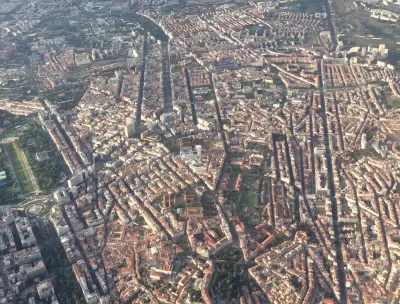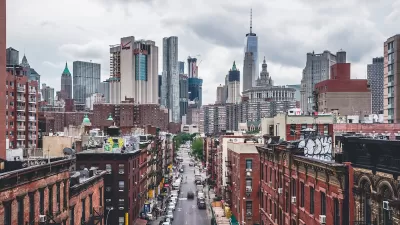Most cities around the world can be broken down into 27 typical patterns of development, according to the work of a researcher at UC Davis.

A close study of the street patterns in cities around the world has shown that most cities are comprised of a combination of 27 development categories—from the urban grid typical of downtown cores to superblocks, new urbanist neighborhoods and the "loops & lollipops" suburban style cul-de-sac development. Emily Badger reports in the The Washington Post’s Wonkblog on the work of University of California at Davis professor Stephen Wheeler, who combed over satellite imagery of multiple metropolitan areas around the world to produce striking maps showing the distribution of the varied development patterns.
What's interesting about these 27 categories that Wheeler has defined, covering the full range of development patterns in two dozen metropolitan regions he has studied worldwide, is that most of them are new. Relatively speaking.
"We have had an explosion of different types of built landscapes in the last century," says Wheeler, who is working on a book about these patterns.
Wheeler's work has shown that the most common type of development is primarily associated with suburbs and exurbs—the patterns of development commonly associated with the car. Wheeler believes his work will help people to understand the role that varied development patterns affect "how we travel, how much time we commute, whether we walk, how healthy we are as a result, how our communities affect the climate and how much pollution we generate."
FULL STORY: The 27 patterns that make up the world’s cities and suburbs

Alabama: Trump Terminates Settlements for Black Communities Harmed By Raw Sewage
Trump deemed the landmark civil rights agreement “illegal DEI and environmental justice policy.”

Study: Maui’s Plan to Convert Vacation Rentals to Long-Term Housing Could Cause Nearly $1 Billion Economic Loss
The plan would reduce visitor accommodation by 25% resulting in 1,900 jobs lost.

Planetizen Federal Action Tracker
A weekly monitor of how Trump’s orders and actions are impacting planners and planning in America.

Wind Energy on the Rise Despite Federal Policy Reversal
The Trump administration is revoking federal support for renewable energy, but demand for new projects continues unabated.

Passengers Flock to Caltrain After Electrification
The new electric trains are running faster and more reliably, leading to strong ridership growth on the Bay Area rail system.

Texas Churches Rally Behind ‘Yes in God’s Back Yard’ Legislation
Religious leaders want the state to reduce zoning regulations to streamline leasing church-owned land to housing developers.
Urban Design for Planners 1: Software Tools
This six-course series explores essential urban design concepts using open source software and equips planners with the tools they need to participate fully in the urban design process.
Planning for Universal Design
Learn the tools for implementing Universal Design in planning regulations.
Caltrans
Smith Gee Studio
Institute for Housing and Urban Development Studies (IHS)
City of Grandview
Harvard GSD Executive Education
Toledo-Lucas County Plan Commissions
Salt Lake City
NYU Wagner Graduate School of Public Service





























